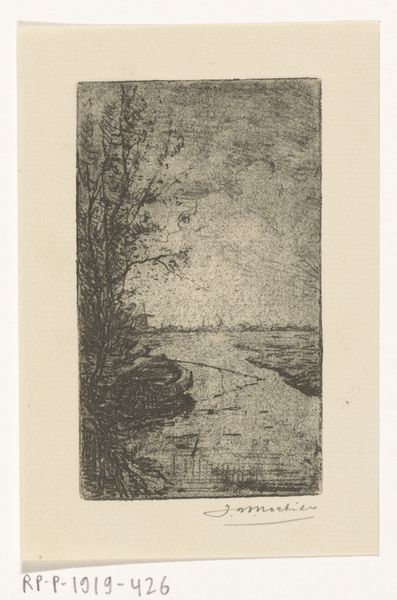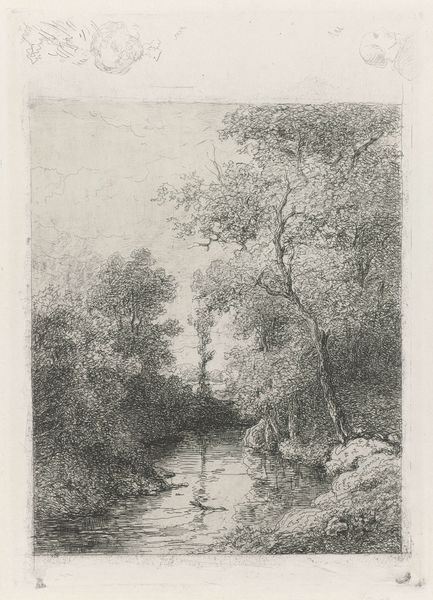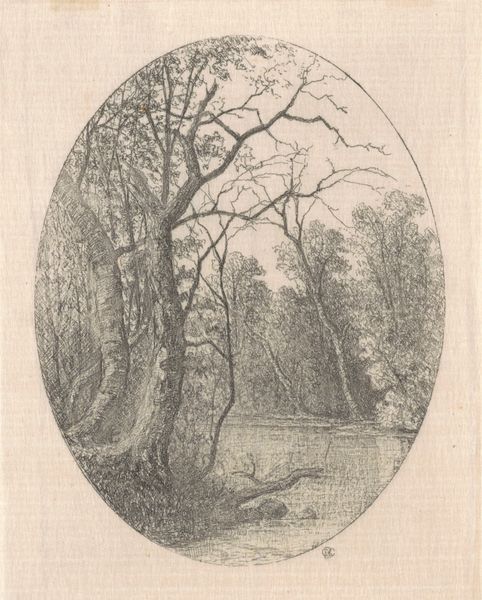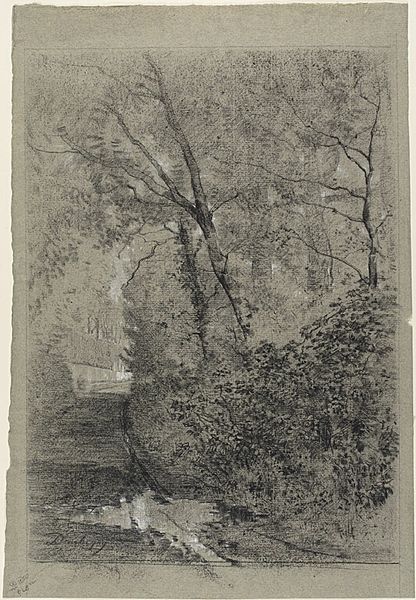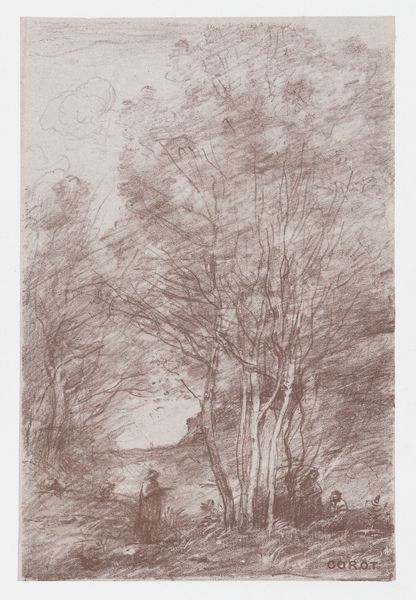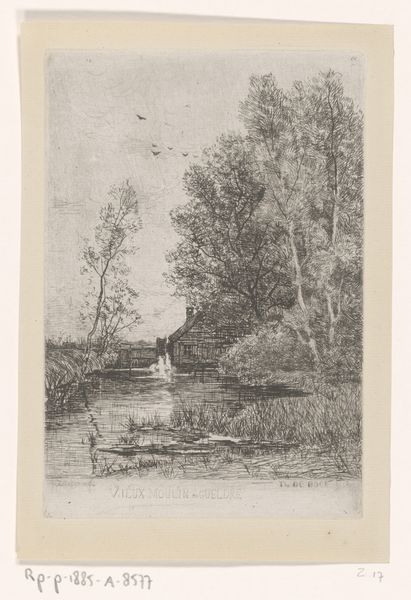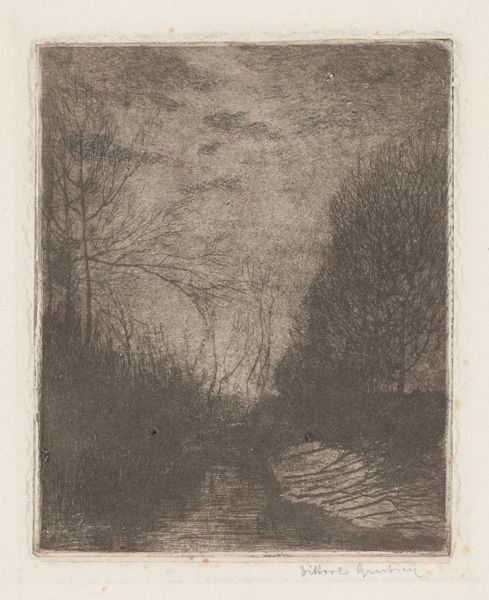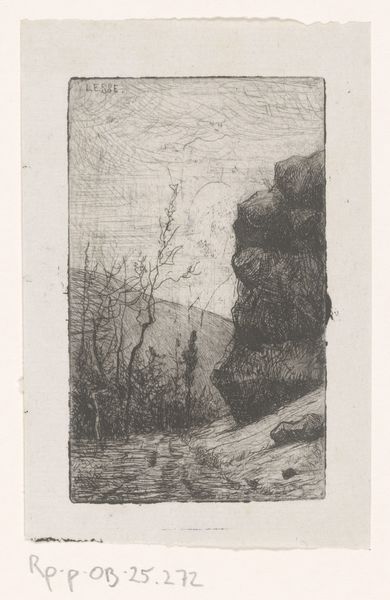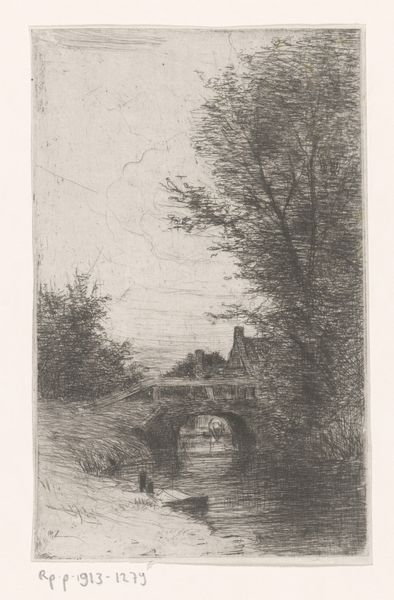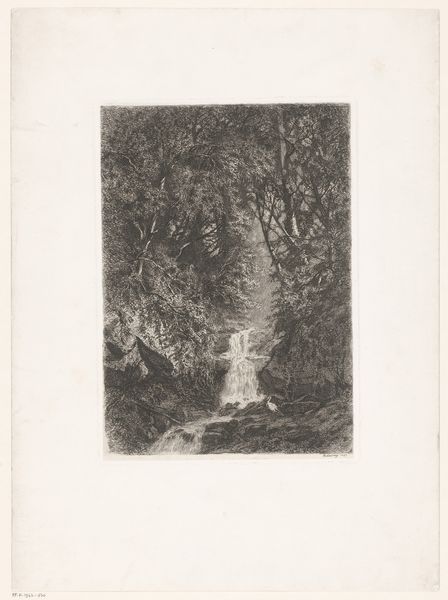![Fisherman on the Lakeshore [Pescatore sulla riva del lago] by Antonio Fontanesi](/_next/image?url=https%3A%2F%2Fd2w8kbdekdi1gv.cloudfront.net%2FeyJidWNrZXQiOiAiYXJ0ZXJhLWltYWdlcy1idWNrZXQiLCAia2V5IjogImFydHdvcmtzL2M0NTUyYTc0LTA2YWUtNGU3OC1iNGE1LTQ5ZjlmY2UxNWZjOC9jNDU1MmE3NC0wNmFlLTRlNzgtYjRhNS00OWY5ZmNlMTVmYzhfZnVsbC5qcGciLCAiZWRpdHMiOiB7InJlc2l6ZSI6IHsid2lkdGgiOiAxOTIwLCAiaGVpZ2h0IjogMTkyMCwgImZpdCI6ICJpbnNpZGUifX19&w=3840&q=75)
Fisherman on the Lakeshore [Pescatore sulla riva del lago] c. 1864
0:00
0:00
Dimensions: sheet: 36.4 × 27.2 cm (14 5/16 × 10 11/16 in.) plate: 17.8 × 11.2 cm (7 × 4 7/16 in.)
Copyright: National Gallery of Art: CC0 1.0
Editor: So, here we have Antonio Fontanesi's etching, "Fisherman on the Lakeshore," created around 1864. It's incredibly atmospheric, almost hazy, with that lone figure of the fisherman adding a touch of melancholy. What strikes you about this piece? Curator: It’s fascinating to consider Fontanesi’s work in relation to the broader political landscape of Italy at that time. Think about the Risorgimento – the unification movement. How do you think depictions of the land, of labor, like this fisherman, played into the developing sense of national identity? Editor: That’s an interesting perspective! I hadn't thought about it in terms of nation-building. It feels so personal and quiet. It’s a very solitary activity depicted. Was Fontanesi attempting to convey political themes or just represent a realistic depiction of life? Curator: It's both, I suspect. Landscape painting, especially during Romanticism and Realism, became a way of idealizing, even mythologizing, the nation's territory. Images like these entered public consciousness and contributed to cultural and social narratives around work, country, and self. Now, consider where and how these prints were distributed – did they reinforce or challenge existing social hierarchies? Editor: I suppose that depends on who had access to them. If they were primarily viewed by the upper classes, maybe it romanticized rural life without necessarily critiquing social structures. I’ll have to do more research on the distribution networks for prints during that period. I’m also wondering how his training impacted the style and subject matter. Curator: Exactly! Understanding who had access to and controlled the image shapes not only its reception but also its political impact. Editor: Well, I've definitely learned to look at landscapes with a new perspective, thinking about them not just as pretty scenes but as active participants in cultural dialogue. Thanks for expanding my viewpoint! Curator: My pleasure! Thinking about the context can really illuminate the subtle ways art engages with society and shapes how we see the world.
Comments
No comments
Be the first to comment and join the conversation on the ultimate creative platform.
